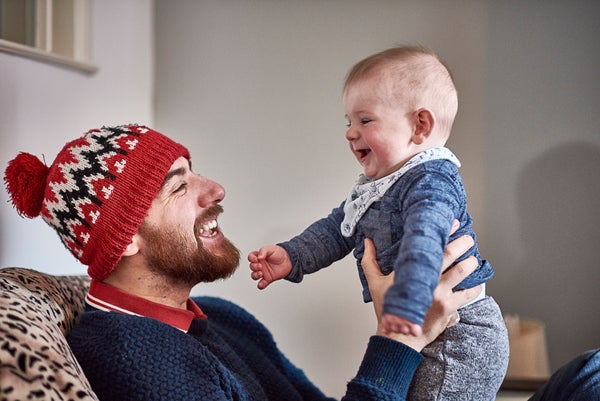On supporting science journalism
If you're enjoying this article, consider supporting our award-winning journalism by subscribing. By purchasing a subscription you are helping to ensure the future of impactful stories about the discoveries and ideas shaping our world today.
Does junior really have his father's nose?
A common bit of parenting folklore holds that babies tend to look more like their fathers than their mothers, a claim with a reasonable evolutionary explanation. Fathers, after all, do not share a mother's certainty that a baby is theirs, and are more likely to invest whatever resources they have in their own offspring. Human evolution, then, could have favored children that resemble their fathers, at least early on, as a way of confirming paternity.
The paternal-resemblance hypothesis got some scientific backing in 1995, when a study in Nature by Nicholas Christenfeld and Emily Hill of the University of California, San Diego, showed that people were much better at matching photos of one-year-old children with pictures of their fathers than with photos of their mothers. (Scientific American is part of Nature Publishing Group.)
Case closed? Hardly. "It's a very sexy result, it's seductive, it's what evolutionary psychology would predict—and I think it's wrong," says psychologist Robert French of the National Center for Scientific Research in France. A subsequent body of research, building over the years in the journal Evolution & Human Behavior, has delivered results in conflict with the 1995 paper, indicating that young children resemble both parents equally. Some studies have even found that newborns tend to resemble their mothers more than their fathers.
In a 1999 study published in Evolution & Human Behavior,French and Serge Brédart of the University of Liège in Belgium set out to replicate the paternal-resemblance finding and were unable to do so. In a photo-matching trial with pictures of one-, three- and five-year-old children and their parents, subjects identified mothers and fathers equally well.
A more recent study in the same journal employed a larger set of photos than were used by either Christenfeld and Hill or Brédart and French in their studies and still concluded that most infants resemble both parents equally. "Our research, on a much larger sample of babies than Christenfeld and Hill's, shows that some babies resemble their father more, some babies resemble their mother more, and most babies resemble both parents to about the same extent," says Paola Bressan, a psychologist at the University of Padova in Italy who co-authored the 2004 study. Bressan added that, to the best of her knowledge, "no study has either replicated or supported" the 1995 finding that babies preferentially resemble their fathers.
Two other studies in Evolution & Human Behavior,one in 2000 and one in 2007, found that newborns actually look more like their mothers than their fathers in the first three days of their lives, as judged by unrelated assessors. But the babies' mothers tend to say just the opposite, emphasizing the child's resemblance to the father. That, too, has a possible evolutionary explanation, according to D. Kelly McLain of Georgia Southern University and his co-authors of the 2000 study. "The bias in how mothers remark resemblance does not reflect actual resemblance and may be an evolved or conditioned response to assure domestic fathers of their paternity," the researchers wrote.
McLain and his colleagues even speculated that evolutionary pressures may have actually reduced the amount of paternal resemblance in newborns, thus ensuring that a putative father will care for a child even if the father has been cuckolded. That both high and low degrees of paternal resemblance have ready explanations highlights one of the challenges in linking subtle human features to changes that played out over millions of years of evolution. "It's kind of hard to distinguish 'just-so' stories from things that are really a product of evolution," French says.
